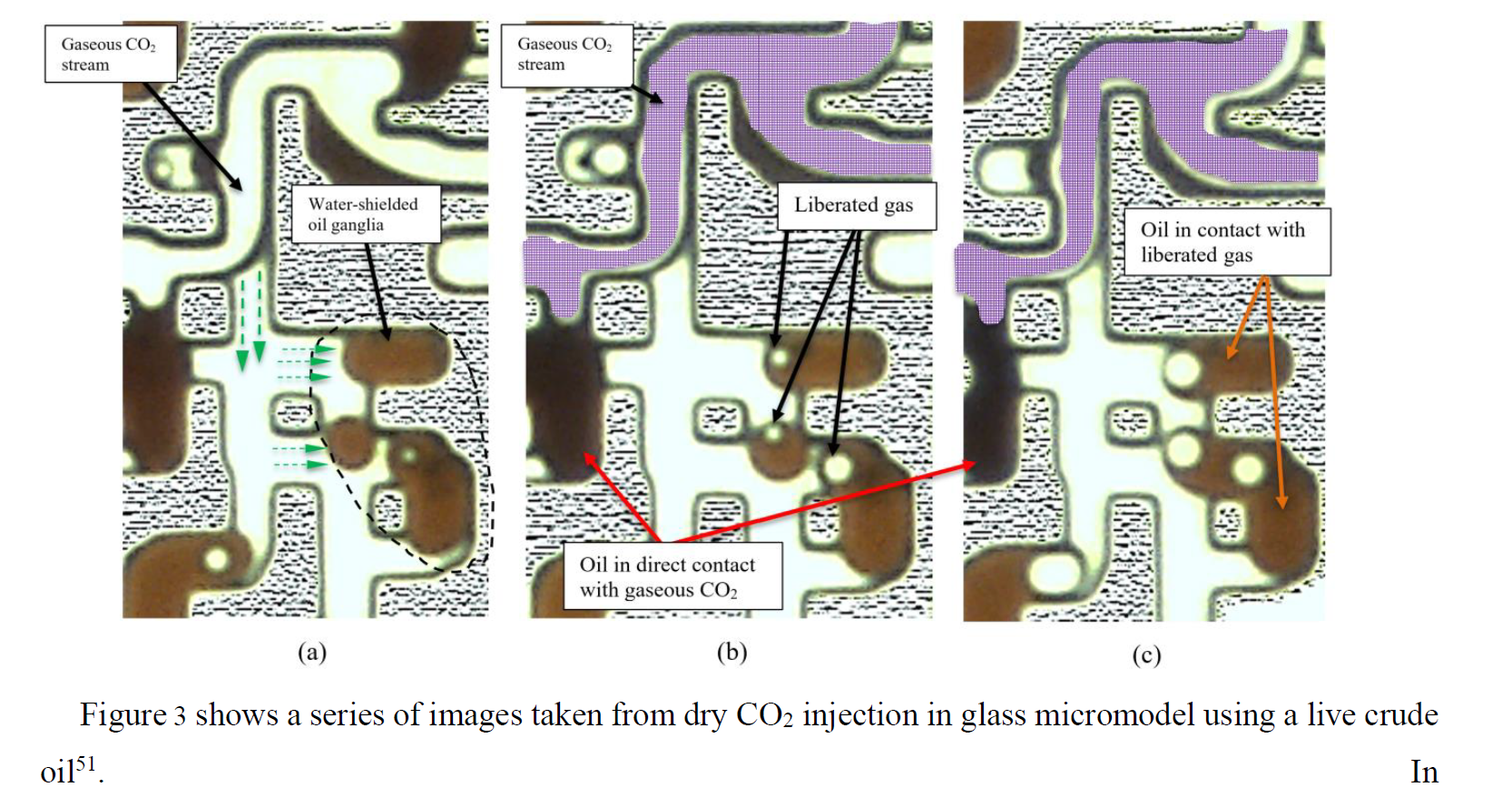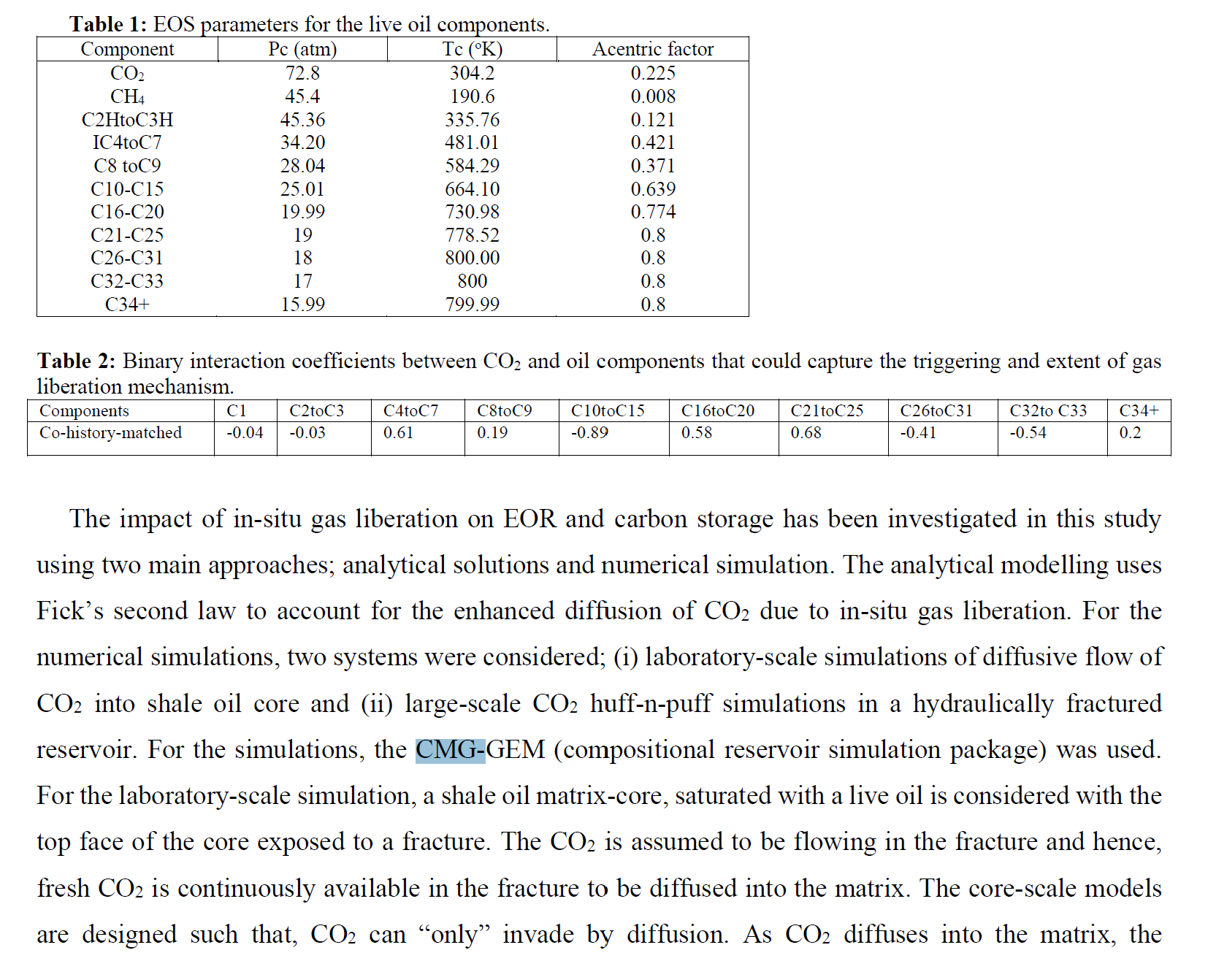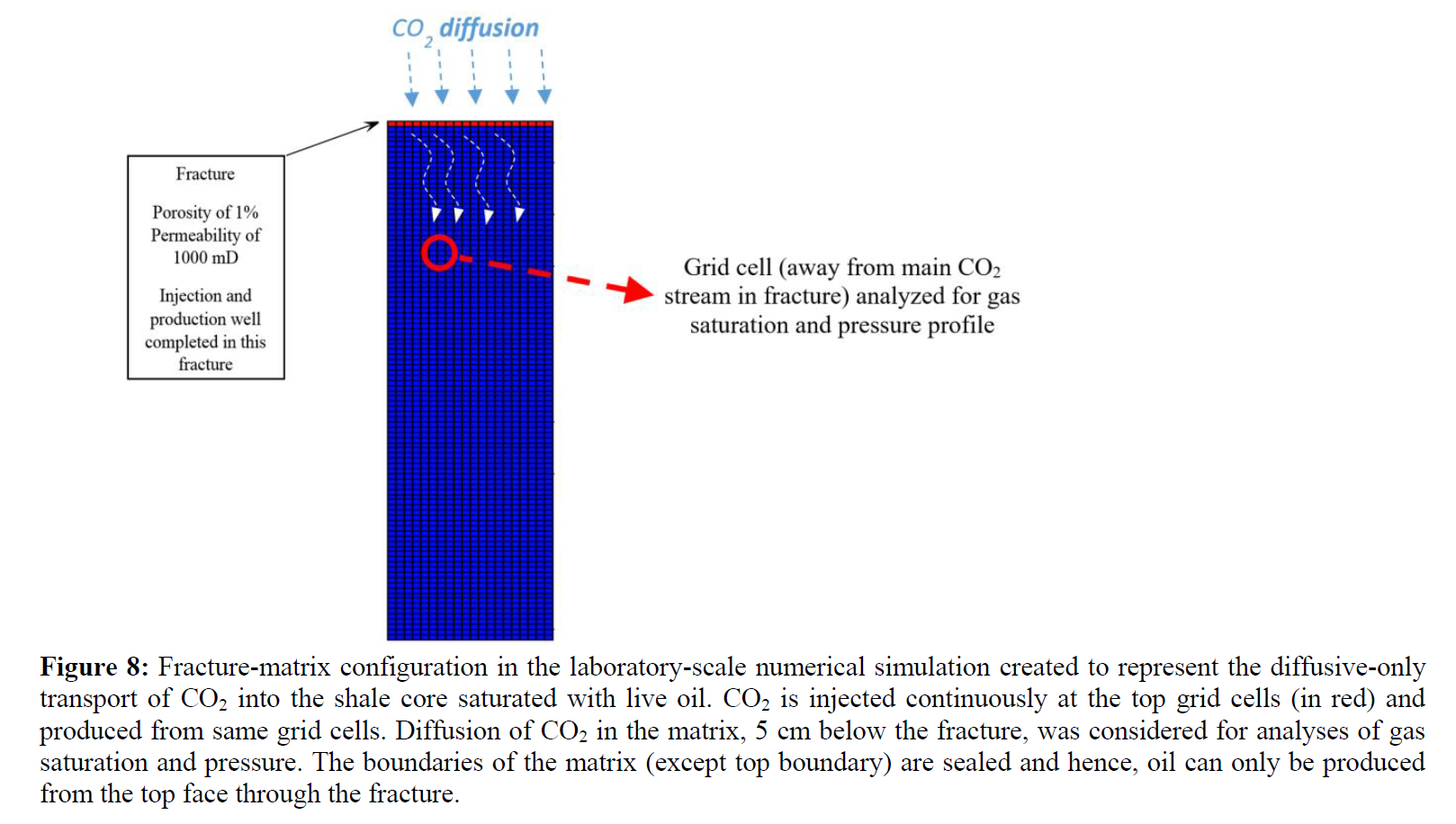Impact of in-situ gas liberation for enhanced oil recovery and CO2 storage in liquid rich shale reservoirs
在页岩层中注入二氧化碳可以同时提高油田的采收率并储存二氧化碳。过去往往忽视了原位轻质油组分释放二氧化碳形成气相对质量传递的影响。本研究开发了一系列解析解和数值模拟,以研究页岩中原油中轻烃气相释放对二氧化碳提高采收率的影响。
结果表明,气相的产生加快了二氧化碳在二相体系中的扩散速度。实验室规模的模拟显示,原位气体的形成可提高油田采收率35%,在矿场规模上,可增加额外的9.8%采收率。此外,由于毛管理捕集对释放的气相中二氧化碳的捕获,页岩层的二氧化碳储存能力可能会大大增强。这些结果有望用于改进评估页岩层中二氧化碳提高采收率潜力。
Abstract
Carbon dioxide injection in shale reservoirs can be beneficial for enhanced oil recovery and CO2 storage scenarios. CO2 mass transfer can be influenced strongly by the in-situ liberation of light oil components from live oil forming a distinct gas phase. This mechanism has been overlooked in the past for studying CO2 and oil interactions in tight formations. In this work, a series of analytical solutions and numerical simulations were developed to identify the effect on EOR by CO2 due to the liberation of a light hydrocarbon gas phase from live oil in shales.
The analytical model demonstrated faster diffusion of CO2 in the two-phase system due to the presence of this gas phase. Using numerical approaches, laboratory-scale simulations indicated that in-situ gas formation can increase oil recovery by 35%. At the field-scale, an additional oil recovery of 9.8% could be attained. Also, the CO2 storage capacity of shale formations could be significantly enhanced due to capillary trapping of CO2 in the liberated gas. The results of this study could potentially be used to improve evaluations of the potential of CO2 EOR in shale reservoirs.





